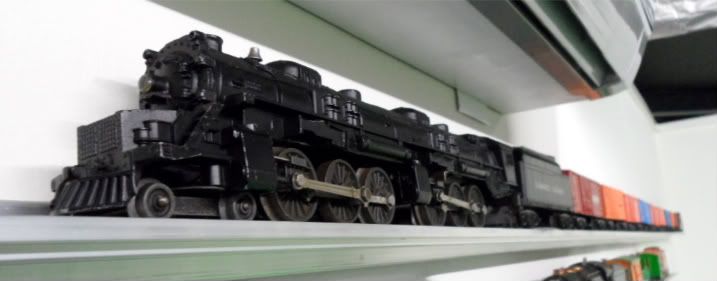In the 1970's and 1980's a man named Bob Gale in Horsham, PA (near Philly) sliced, diced and "kitbashed" common Lionel postwar locomotives to make everything from switchers to Big Boys, 4-12-2's, and "scale" GG-1's. He called his best models "Super Classics." Now and then one turns up, most likely at a big meet like York. His Big Boy comprised two Berkshire running gears. I think his 4-12-2's had 2 motors.
As John posted, "O-31" and "0-27" were standard. Introduced for the UP M-10000 streamliner in 1934, "0-72" was an option. Super "O" was a bit wider at "O-36." MPC trains were designed for "0-27." I vaguely recall a photo of a prototype articulated (maybe a UP Challenger) in Lionel or American Flyer archives. But sales of toy trains were falling rapidly (thanks to TV, slot racing, and HO). Designing and manufacturing a big articulated that required "0-72" was not feasible.
In the 1970's, K-Line and Lionel introduced 42" and 54" diameter curves and 3-foot straight sections in "0-27" and in "O" (as well as "0-72" curves and straight sections). That track made "Hi-Rail" layouts possible.
Here is a photo of Lionel's largest steamer - Reading T-1 No. 2100, produced in 1989 when Lionel CEO Richard Kughn was one of 4 owners of the real No. 2100. She was designed for "0-42," not "0-72."

I think that the first mass-produced "O" Gauge articulated was a die-cast UP Challenger by Mike Wolf in 1994. He took a big risk manufacturing it.
We enjoy so many trains of all sizes today that it's hard to imagine how threadbare the toy train market was from the 1960's through the 1980's.
O scale 2-rail locomotives, including articulateds, were imported by Max Gray and others. But they didn't run nearly as well as locomotives do today. And they didn't have sounds.
All in all, it's hard to believe how far we "O" Gaugers have come. And how fast!
















